
The 1960s stands as a monumental decade in automotive history, a period where passion, ingenious engineering, and audacious design converged to create vehicles that transcended mere transportation. While many iconic machines from this era are universally celebrated – the roaring muscle cars, the elegant grand tourers, and the race-proven legends – there exists a more exclusive echelon of sports cars. These are the unsung heroes, often limited-production marvels that pioneered technologies and design philosophies decades ahead of their time, yet remain largely unknown to all but the most dedicated automotive connoisseurs. These are the machines that truly differentiate a casual admirer from a bona fide collector, showcasing a depth of understanding that goes beyond the mainstream.
This unique collection represents a profound dive into the minds of forgotten innovators who dared to take incredible risks. They weren’t always backed by the massive marketing budgets of their more famous counterparts, nor did they necessarily achieve mainstream acclaim. Instead, their legacy is built on groundbreaking engineering and timeless design principles, influencing modern cars in subtle yet significant ways. Prepare to embark on a journey that will challenge your preconceptions of 1960s automotive excellence, revealing masterpieces that combined audacious vision with unparalleled craftsmanship, proving that true innovation often thrives beyond the spotlight and is eventually recognized for its foresight.
For the true enthusiast, recognizing these vehicles is a badge of honor, a testament to an in-depth understanding of a pivotal era. We’re talking about cars that didn’t just push boundaries; they obliterated them, setting new benchmarks for performance, aesthetics, and driver engagement. Their stories are woven into the very fabric of automotive evolution, often hinting at future trends and demonstrating foresight that only deep analysis can truly appreciate. Join us as we explore five such exemplars, each a testament to the audacious spirit of the 1960s and a treasure for the discerning collector who seeks to understand the very roots of modern automotive design and engineering.
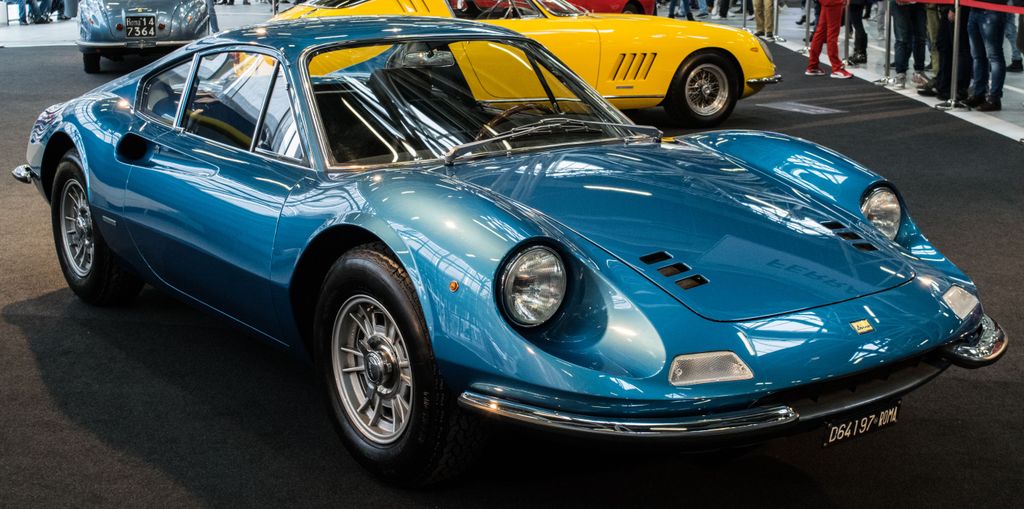
1. **Ferrari Dino 206 GT**This model marks a fundamental shift in Ferrari’s design philosophy, emerging in 1968 as a truly revolutionary mid-engined masterpiece. Its development was a testament to design innovation and aerodynamic principles, resulting in a meticulously crafted run of just 152 units, each bearing Pininfarina’s unmistakable masterwork in aluminum. Standing at a mere 43.5 inches tall, the Dino 206 GT introduced groundbreaking proportions that not only visually stunning but also established new parameters for supercar aesthetics and aerodynamic efficiency that would influence the industry for decades to come. Its low-slung profile and elegant curves were not merely aesthetic choices; they were integral to a driving experience unlike any Ferrari had offered before.
The original price of the Dino 206 GT naturally catered to Ferrari’s exclusive clientele, reflecting its groundbreaking nature, limited production, and the advanced engineering it encapsulated. This exclusivity was a hallmark of its initial release, positioning it as a vehicle for the most discerning buyers. However, its enduring legacy and profound impact are truly evidenced in today’s burgeoning classic car market. Here, these rare beauties command values between $600,000 to $800,000 and frequently even more, depending on condition and provenance. This significant and sustained appreciation underscores the profound influence of its revolutionary design, proving unequivocally that forward-thinking aesthetics, meticulous craftsmanship, and engineering prowess only gain value and recognition with the passage of time, becoming more coveted as their historical significance becomes clearer to new generations of dedicated collectors.
Stepping inside the 206 GT, one immediately senses a meticulous dedication to purpose and driver focus. The Veglia instruments, elegantly mounted within the sculpted aluminum dashboard, are not merely functional; they blend harmoniously with the satisfyingly precise gated shifter mechanism, defining a cockpit that is both beautiful and highly effective. The three-spoke wooden steering wheel and carefully sculpted leather bucket seats work in concert to forge an environment where control and feedback are paramount, offering an unfiltered, visceral connection between driver and machine. Unlike many of its exotic contemporaries that often compromised outward visibility for dramatic styling, the 206 GT’s expansive glasswork cleverly eliminated blind spots while masterfully preserving its perfect, flowing exterior lines, a thoughtful integration of practicality with unparalleled design that remains a defining characteristic of its enduring appeal and a testament to its intelligent engineering.
Car Model Information: 2021 Lincoln Navigator Reserve
Name: Dino 206 GT,Dino 246 GT and GTS
Caption: Dino 246 GT
Manufacturer: Ferrari
Designer: Pininfarina,Aldo Brovarone,Leonardo Fioravanti (engineer)
Class: Sports car
Layout: Transverse engine,Rear mid-engine, rear-wheel-drive layout
Engine: Ferrari Dino engine
Successor: Ferrari GT4
Sp: uk
Categories: All articles with unsourced statements, Articles with short description, Articles with unsourced statements from September 2018, Cars introduced in 1968, Cars introduced in 1969
Summary: The Dino 206 GT, 246 GT and 246 GTS are V6 mid-engined sports cars produced by Ferrari and sold under the Dino marque between 1967 and 1974.
The Dino 246 was the first automobile manufactured by Ferrari in high numbers. It is lauded by many for its intrinsic driving qualities and groundbreaking design. In 2004, Sports Car International placed the car at number six on its list of Top Sports Cars of the 1970s. Motor Trend Classic placed the 206/246 at number seven in their list of the 10 “Greatest Ferraris of all time”.
Get more information about: Dino 206 GT and 246 GT
Buying a high-performing used car >>>
Brand: Ferrari Model: Dino 206 GT
Price: $39,193 Mileage: 92,317 mi.
Read more about: Remember These? 14 Classic Cars From the 1980s That Everyone Forgot About

2. **Lotus Europa**The Lotus Europa, a visionary brainchild of Colin Chapman, made its impactful debut in 1966, immediately distinguishing itself with a breakthrough price point of just £1,666 for a mid-engine innovation. This was a car conceived and designed with an unwavering focus on efficiency, lightweight construction, and an almost minimalist philosophy, embodying Chapman’s relentless obsession with aerodynamic principles and performance through lightness. Its truly revolutionary fiberglass body achieved a remarkably low overall height of just 42 inches, yet managed to maintain impressive structural integrity, a testament to the advanced composite engineering utilized for its era. The sharp front-end design, combined with its distinctive and aerodynamically optimized sail panels, visibly showcased Chapman’s relentless pursuit of maximum efficiency and handling prowess.
The Europa’s pioneering mid-engine design, coupled with its surprisingly accessible original pricing, contributes significantly to its current market value. Today, values ranging from $30,000 to $75,000 make this historically significant vehicle surprisingly attainable for a broader range of collectors, allowing more enthusiasts to own a tangible piece of automotive history that fundamentally challenged conventional sports car layouts. The Europa was much more than just a car; it was a profound statement about how a high-performance sports car could and should be built, eschewing brute force in favor of unparalleled agility, exceptional driver connection, and a pure, unadulterated driving experience. Its unique profile and innovative engineering ethos continue to attract those who deeply appreciate a purist, driver-focused approach to performance and design.
Within the Europa’s intimately designed cockpit, Colin Chapman’s minimalist and functional philosophy truly comes to life. The semi-reclined driving position is intentionally engineered to enhance both comfort during long drives and precise control during spirited maneuvers, creating an intimate, almost symbiotic connection with the road that is a hallmark of all Lotus vehicles. Smiths gauges, providing critical operational information, are presented through clear, uncluttered displays, ensuring the driver remains fully focused on the task at hand without unnecessary distractions. Beyond its performance-oriented design, the Europa cleverly integrates practical storage spaces, thoughtfully placed beneath the front bonnet and conveniently behind the seats, effectively challenging the common notion that sports cars must inherently sacrifice utility. Notably, early Series 1 models are particularly coveted in the collector market today, frequently commanding premium prices due to their uncompromised engineering focus and unadulterated design, representing the purest and most sought-after form of Chapman’s groundbreaking vision.
Read more about: Revive Your Dream Ride: 14 Indispensable Insights for First-Time Classic Car Restorers

3. **Sunbeam Tiger**Emerging with a powerful roar in 1964 and initially priced at $3,499, the Sunbeam Tiger brilliantly resolved a persistent automotive conundrum: how to perfectly fuse traditional British handling prowess with the raw, untamed power of an American V8 engine. This audacious Anglo-American hybrid was born from an inspired engineering decision to transplant a potent Ford V8 engine into the nimble and well-regarded chassis of a Sunbeam Alpine. The resulting transformation was not merely mechanical; it was profoundly visual as well. The Tiger’s distinct, muscular hood bulges and subtly widened wheel arches were not just aesthetic enhancements; they purposefully reshaped the Alpine’s otherwise gentle curves, injecting a palpable sense of aggression and formidable muscle that unmistakably signaled the serious power lurking beneath its bonnet.
Despite its new-found aggression, the designers meticulously preserved a traditional British elegance through classic design elements such as the timeless wire wheels and gleaming chrome bumpers, ensuring the Tiger retained a sophisticated and refined charm that was expected of a European sports car. However, the purposeful presence of twin exhaust tips served as an unmistakable, albeit subtle, hint at the powerful Ford V8 engine that defined its character and significantly boosted its performance capabilities. This masterful blend of British refinement and American brawn has ensured its enduring place in discerning collector circles. Modern collectors, recognizing this truly unique fusion of automotive cultures, value this distinctive Anglo-American hybrid at figures ranging from $80,000 to $150,000. Furthermore, the even rarer Mark II models consistently command higher prices, a testament to its enduring appeal and its profound historical significance as a genre-bending machine that dared to combine the best of both worlds.
Inside the Tiger, the compelling blend of its British and American origins continues to be subtly evident. While the exterior boldly hints at the American power beneath, the interior largely retains its elegant British roots, offering a cockpit that feels both classic in its presentation and highly purposeful in its layout. The seating position is carefully optimized for comfortable yet spirited driving, while the instrumentation, though straightforward and uncluttered, provides all the necessary feedback to keep the driver fully engaged and informed. This car was emphatically not about extravagant luxury or ostentatious features; instead, it was conceived to deliver a pure, unadulterated driving experience, offering a direct and exhilarating connection to the road that very few cars of its era could genuinely match. The Sunbeam Tiger remains a fascinating and highly desirable study in automotive cross-pollination, delivering a unique proposition that continues to captivate enthusiasts seeking something truly special and distinctly potent from the dynamic 1960s.
Car Model Information: 1967 Sunbeam Tiger
Name: Sunbeam Tiger
Alt: Front left view
Manufacturer: Rootes Group
Production: 1964–1967,7,083 built
Assembly: West Bromwich,England
Class: Sports car
BodyStyle: Roadster (automobile)
Related: Sunbeam Alpine
Layout: FR layout
Engine: 260 cuin
Abbr: sfnp
Transmission: Manual transmission
Wheelbase: 86 in
Length: 156 in
Width: 60.5 in
Height: 51.5 in
Sp: uk
Categories: All articles lacking reliable references, Articles lacking reliable references from January 2020, Articles with short description, Cars discontinued in 1967, Cars introduced in 1964
Summary: The Sunbeam Tiger is a high-performance V8 version of the British Rootes Group’s Sunbeam Alpine roadster, designed in part by American car designer and racing driver Carroll Shelby and produced from 1964 until 1967. Shelby had carried out a similar V8 conversion on the AC Cobra, and hoped to be offered the contract to produce the Tiger at his facility in the United States. Rootes decided instead to contract the assembly work to Jensen at West Bromwich in England, and pay Shelby a royalty on every car produced.
Two major versions of the Tiger were built: the Mark I (1964–1967) was fitted with the 260 cu in (4.3 L) Ford V8; the Mark II, of which only 633 were built in the final year of Tiger production, was fitted with the larger displacement Ford 289 cu in (4.7 L) engine. Two prototype and extensively modified versions of the Mark I competed in the 1964 24 Hours of Le Mans, but neither completed the race. Rootes also entered the Tiger in European rallies with some success, and for two years it was the American Hot Rod Association’s national record holder over a quarter-mile drag strip.
Production ended in 1967 soon after the Rootes Group was taken over by Chrysler, which did not have a suitable engine to replace the Ford V8. Owing to the ease and affordability of modifying the Tiger, there are few remaining cars in standard form.
Get more information about: Sunbeam Tiger
Buying a high-performing used car >>>
Brand: Sunbeam Model: Tiger
Price: $89,000 Mileage: 7 mi.
Read more about: From Hollywood A-Listers to the Highway: 16 Surprising Stars Who Are Avid Bikers

4. **Datsun 240Z**The Datsun 240Z, launched in 1969 with an astonishingly accessible price of $3,526, delivered a seismic shock to the established automotive world, unequivocally shattering entrenched preconceptions about the capabilities and desirability of Japanese sports cars. This vehicle was nothing short of a revelation, demonstrably proving that Japan possessed the engineering prowess and design acumen to produce a sports car that not only competed fiercely with, but also, in many crucial ways, surpassed its revered European counterparts in terms of style, thrilling performance, and undeniable value. Its now-iconic fastback profile and distinctive sugar-scoop headlights were far more than mere aesthetic flourishes; they were meticulously designed, integral elements that redefined aerodynamic efficiency, contributing significantly to its impressive performance envelope and stable road holding.
The 240Z’s meticulously clean body lines and impeccably precise panel gaps were a clear and powerful declaration of Japanese engineering prowess and an obsessive attention to detail, setting an entirely new benchmark for build quality and overall fit-and-finish within the highly competitive sports car segment. This unwavering commitment to manufacturing excellence extended far beyond its immediate visual appeal, positively influencing its long-term reliability, durability, and ultimately, its widespread desirability among enthusiasts. Early “Series 1” cars, in particular, have become exceptionally highly sought-after in the collector market, now regularly fetching impressive values between $40,000 and $120,000, depending on their originality and condition. This significant and sustained appreciation unequivocally proves the Z car’s lasting impact on global sports car design and its undeniable legacy as a pivotal model that opened the global market to Japanese high-performance vehicles, forever changing perceptions.
The interior of the 240Z, introduced in 1969, fundamentally reset the standards for ergonomic design in sports car cockpits. Its thoughtfully arranged cabin created an aircraft-inspired command center through deeply hooded instruments and an intelligently angled center stack, all meticulously configured for intuitive operation and minimal driver distraction, prioritizing the driving experience above all else. The durable vinyl-wrapped seats were not only comfortable for long journeys but also exceptionally highly adjustable, offering a generous 8.8 inches of fore-aft movement to comfortably accommodate a wide range of drivers. Furthermore, its innovative hatchback configuration unlocked an impressive 13.1 cubic feet of versatile cargo space, a practicality often astonishingly overlooked in traditional sports car design. At a time when many European GTs struggled to provide adequate room for weekend luggage or daily errands, the 240Z emerged as a remarkably versatile machine, proving unequivocally that a true sports car could effortlessly manage both thrilling canyon roads and essential airport runs, masterfully blending exhilarating performance with an unprecedented level of everyday functionality.
Car Model Information: 1972 Datsun 240Z
Name: Nissan Fairlady Z (Datsun 240Z, 260Z, and 280Z)
Aka: unbulleted list
Manufacturer: Nissan
Production: 1969–1978
Class: Sports car
Layout: Front-engine, rear-wheel-drive layout
Assembly: Hiratsuka, Kanagawa
BodyStyle: unbulleted list
Designer: Yoshihiko Matsuo
Predecessor: Datsun Sports
Successor: Nissan Fairlady Z (S130)
Caption: 1970–1973 Nissan Fairlady Z
Categories: 1970s cars, All Wikipedia articles written in American English, All articles with unsourced statements, Articles with short description, Articles with unsourced statements from February 2021
Summary: The Nissan S30, sold in Japan as the Nissan Fairlady Z but badged as the Datsun 240Z, 260Z, and 280Z for export, are 2-seat sports cars and 2+2 GT cars produced by Nissan from 1969 until 1978. The S30 was conceived of by Yutaka Katayama, the President of Nissan Motor Corporation U.S.A., and designed by a team led by Yoshihiko Matsuo, the head of Nissan’s Sports Car Styling Studio. It is the first car in Nissan’s Z series of sports cars.
The S30 had four-wheel independent suspension and a powerful straight-six engine with an overhead camshaft, features identified with far more expensive premium European sports cars and coupés such as the Jaguar E-Type and BMW 2800 CS, but absent from similarly priced sports cars such as the Alfa Romeo Spider, MGB and Opel GT, which had smaller four-cylinder engines and rear live axles. The S30’s styling, engineering, relatively low price, and impressive performance resonated with the public, received a positive response from both buyers and the motoring press, and immediately generated long waiting lists.
As a halo car, the S30 broadened the acceptance of Japanese carmakers beyond their image as producers of practical and reliable but prosaic and unfashionable economy cars. Datsun’s growing dealer network—compared to limited production imported sports cars manufactured by Jaguar, BMW, Porsche, Alfa Romeo, and Fiat—ensured both easy purchase and ready maintenance.
The S30 was initially sold alongside the smaller four-cylinder Datsun Sports, which was dropped from production in 1970. The S30 240Z is unrelated to the later 240SX, sold as the Silvia in Japan.
Get more information about: Nissan Fairlady Z (S30)
Buying a high-performing used car >>>
Brand: Datsun Model: 240Z
Price: $33,999 Mileage: 122,000 mi.
Read more about: The Undeniable Rise: 12 Vintage Cars That Have Skyrocketed to 10x Their Original Value
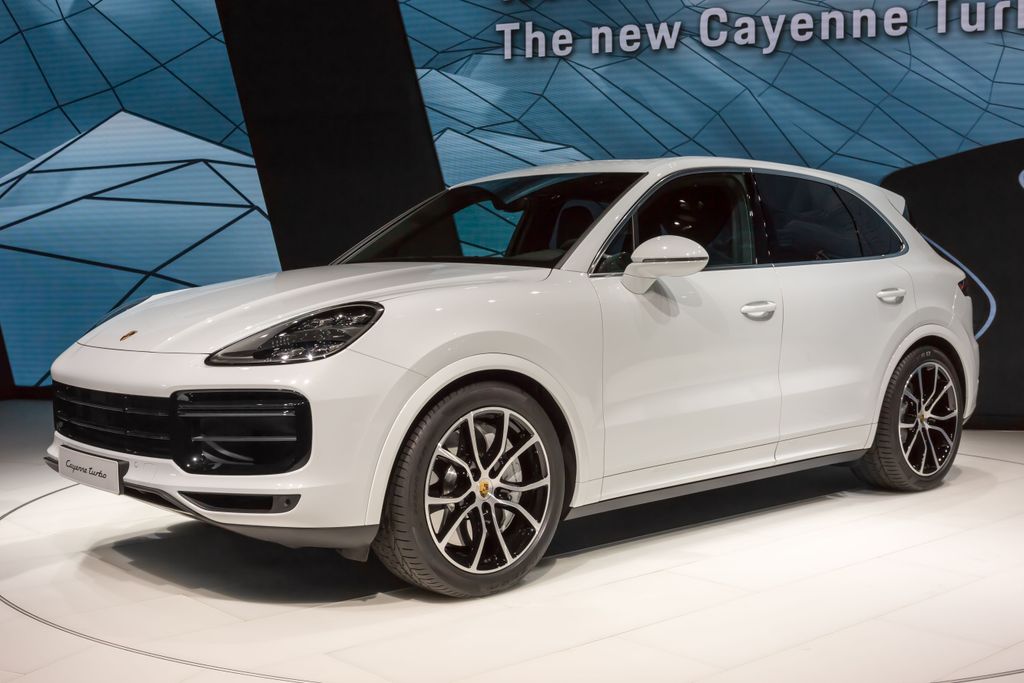
5. **Porsche 914**In 1969, Porsche made a bold and strategic move, significantly expanding its design and engineering horizons beyond its customary and highly successful rear-engine comfort zone with the daring introduction of the 914, initially priced at $3,495. This mid-engined venture represented a significant and deliberate departure for the Stuttgart marque, unequivocally showcasing Porsche’s willingness to innovate, embrace new vehicle configurations, and cater to a slightly different market segment. A defining and highly practical feature of the 914 was its removable Targa panel, an exceptionally clever design element that stowed neatly and conveniently in the front trunk. This ingenious solution brilliantly delivered the exhilarating freedom of open-air driving without the usual structural compromises, increased weight, and complexities often associated with traditional soft-top convertibles, effectively offering the best of both worlds to its enthusiastic drivers.
The 914’s integrated bumpers and distinctive pop-up headlights were not merely stylistic flourishes; they were carefully considered design elements that served as clear indicators of forward-thinking automotive trends, reflecting a modern and minimalist aesthetic that would subtly influence overall vehicle design well into the subsequent decade. These elements contributed to a remarkably clean, uncluttered profile that was both highly functional from an aerodynamic standpoint and visually appealing in its execution. Today, the values for a well-preserved Porsche 914 typically range from $30,000 to $75,000, strategically positioning it as an accessible and attractive entry point into the coveted world of classic Porsche ownership for many aspiring enthusiasts. However, for those seeking ultimate rarity, enhanced performance, and a deeper connection to Porsche’s racing heritage, the exceptional 914/6 variants, which were equipped with a more powerful Porsche-sourced flat-six engine, can command significantly higher prices, often exceeding $100,000, underscoring their unique historical and considerable collectible value.
The 914’s driver-focused cockpit embodies a philosophy of intuitive interaction and ergonomic excellence, meticulously placing every control precisely where muscle memory instinctively expects to find it. A prominent central tachometer elegantly anchors the five-gauge cluster, a subtle yet powerful nod to Porsche’s illustrious racing heritage, carefully balancing essential operational information without overwhelming the driver with extraneous data. The precise H-pattern shifter delivers a satisfying, mechanical precision with each gear change, reinforcing the car’s direct, engaging, and highly tactile driving character. Furthermore, the high-backed seats are meticulously designed to provide secure lateral support, holding the occupants firmly in place without any restrictive feel during dynamic maneuvers. Critically, during an era when many sports cars often presented drivers with an uncompromising choice between pure performance and practical utility, the 914 defied this convention. Its twin storage compartments, collectively offering a generous 12.7 cubic feet of space, made the 914 an eminently viable and genuinely practical daily driver, masterfully blending sports car exhilaration with an unprecedented level of everyday functionality.
Car Model Information: 1970 Porsche 914 914/6
Name: Porsche 914
Caption: 1970 Porsche 914
Manufacturer: Porsche,Karmann
Aka: VW-Porsche 914
Production: 1969–1976,118,978 produced,914/4: 115,646,914/6: 3,332,914/8: 2
Assembly: Stuttgart,Osnabrück
Predecessor: Porsche 912,Volkswagen Karmann Ghia#Type 34 Karmann Ghia
Successor: Porsche 924
Class: Sports car
BodyStyle: Targa top
Layout: Rear mid-engine, rear-wheel-drive layout
Engine: Volkswagen air-cooled engine#Type 4: 1.7–2.0 litres,Volkswagen air-cooled engine#Type 4: 1.7–2.0 litres,Volkswagen air-cooled engine#Type 4: 1.7–2.0 litres,Porsche flat-six engine
Wheelbase: cvt
Length: cvt
Width: cvt
Height: cvt
Weight: cvt
Related: Porsche 914-6 GT,Porsche Tapiro
Designer: Ferdinand Alexander Porsche
Categories: 1970s cars, 24 Hours of Le Mans race cars, All articles needing additional references, All articles with incomplete citations, All articles with unsourced statements
Summary: The Porsche 914 or VW-Porsche 914 is a mid-engined sports car designed, manufactured and marketed collaboratively by Volkswagen and Porsche from 1969 until 1976. It was available only as a targa-topped two-seat roadster powered by either a flat-4 or flat-six engine.
Get more information about: Porsche 914
Buying a high-performing used car >>>
Brand: Porsche Model: 914
Price: Not Priced Mileage: 52,111 mi.
Read more about: 12 Legendary Race Cars Banned: Too Fast, Too Innovative, and Too Far Ahead of Their Time

6. **TVR Grantura Mark III**The TVR Grantura Mark III, introduced in 1962 at £1,567, demonstrated that small manufacturers could innovate profoundly. This distinctive British sports car embodied groundbreaking design and engineering, proving that cutting-edge solutions were not exclusive to larger marques. Its exterior featured a wraparound windscreen flowing seamlessly into an aerodynamically optimized roofline, while lightweight fiberglass construction maintained optimal mass distribution for superior handling. A particularly clever design was the front-hinged bonnet, which provided complete mechanical access, proactively addressing the maintenance challenges common to specialty vehicles of its era. Today, these rare machines command market values typically ranging from $35,000 to $60,000, reflecting both their scarcity and the dedicated effort required to find well-preserved examples that represent TVR’s early innovation.
Stepping inside the Grantura Mark III immediately conveys its competition-bred philosophy through an interior governed by pure function. Leather-covered panels meticulously house Smiths gauges directly in the driver’s line of sight, reinforcing its purposeful design and minimizing distraction. The close-coupled seating position is engineered to create an intimate, almost hardwired connection between the driver and the chassis, enhancing feedback and precise control. Weighted controls, from the steering to the gear shifter, further amplify this connection, delivering a palpable “conversation with the road” that is deeply cherished by driving purists. While many British sports cars of the era pursued luxury, the Grantura defiantly proved that a focus on simplicity and unadulterated performance had profound rewards, accelerating from 0 to 60 mph in a brisk 8.9 seconds – a remarkable feat for a car of its class and time. This relentless dedication to the driving experience ensures its enduring appeal among collectors who value raw automotive passion.
Its enduring legacy lies in bold defiance of convention, presenting a powerful argument for the impact of specialized engineering and a singular vision in an automotive landscape often dominated by mass production. The construction, prioritizing lightness and structural rigidity through advanced fiberglass techniques, was a forward-thinking approach that underscored TVR’s commitment to performance through innovative material science. The accessibility of mechanical components, afforded by the thoughtful front-hinged bonnet, not only simplified maintenance but also reflected a deep understanding of the enthusiast owner’s needs. This combination of groundbreaking design, driver-centric engineering, and robust performance, all delivered by a relatively small outfit, makes the Grantura Mark III a truly distinctive and historically significant vehicle, continually reminding us that true innovation can emerge from unexpected corners of the automotive world.
Car Model Information: 2021 Lincoln Navigator Reserve
Name: TVR Grantura
Manufacturer: TVR
Production: 1958–1967,796 produced
Class: Sports car
Successor: TVR Vixen
Layout: FR layout
Assembly: Blackpool,England
Caption: 1961 TVR Grantura Mark IIa
Categories: 1960s cars, All articles needing additional references, Articles needing additional references from November 2018, Articles with short description, Cars discontinued in 1967
Summary: The TVR Grantura is the first production model in a long line of TVR cars. It debuted in 1958 and went through a series of developments leading to the Mark I to Mark IV and 1800S models. The last ones were made in September 1967.
These coupés were hand-built at the TVR factory in Blackpool, England with varying mechanical specifications and could be had in kit form. All cars featured a cocktail of Austin-Healey brakes, VW Beetle or Triumph suspension parts and BMC rear axles.
The Grantura bodyshell was made from glass-reinforced plastic and made use of a variety of proprietary components. The bonnet was front hinged. There was no opening at the rear but the boot could be accessed from inside the car – the spare wheel had to be removed through the front doors. Buyers could choose from a range of powerplants which, dependant on the model in question, included a choice of side or overhead valve engines from Ford, a Coventry Climax unit, the engine from the MGA and, ultimately, the 1798cc BMC B-series engine.
Get more information about: TVR Grantura
Buying a high-performing used car >>>
Brand: TVR Model: Grantura Mark III
Price: $39,193 Mileage: 92,317 mi.
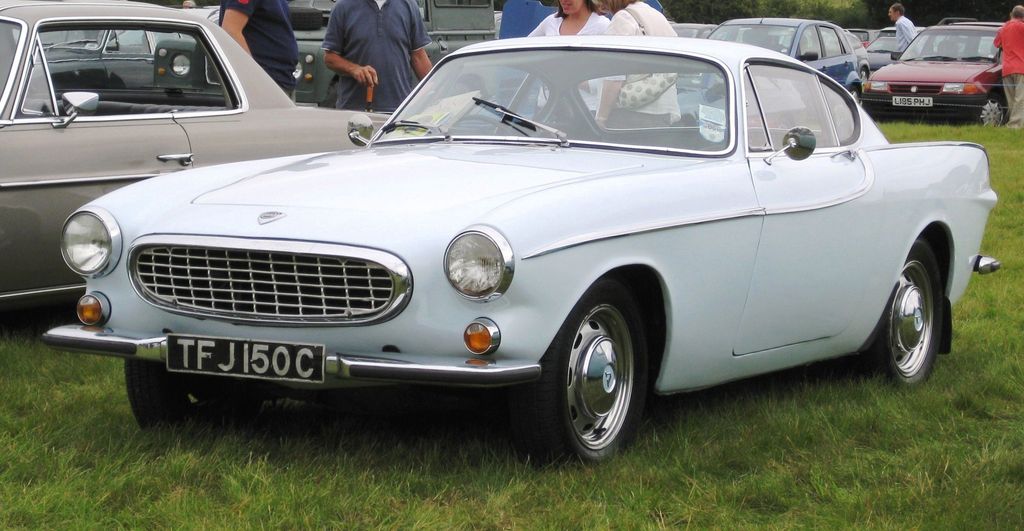
7. **Volvo P1800**In 1961, Volvo launched the P1800 at $3,995, shattering prevailing myths about Swedish cars and effectively demonstrating that their engineering prowess extended far beyond utilitarian design. This elegant grand tourer was a deliberate and successful departure, crafted to captivate with its sophisticated aesthetics and engaging driving dynamics. Its flowing profile is instantly recognizable, distinguished by graceful chrome side strips that run the length of the body, and an innovative grille design that masterfully integrates with the hood, transforming it into a cohesive styling element. Distinctive round taillights and strategically bumper-mounted exhausts complete a timeless shape that remains remarkably fresh today. This blend of durability and undeniable style ensures its desirability among collectors, with modern valuations typically falling between $40,000 and $100,000, and early Jensen-built cars, in particular, often fetching premium prices for their historical significance.
The P1800’s cabin reveals a masterful fusion of jet-age style with characteristic Swedish common sense. The interior is defined by a signature ribbon-style speedometer, an iconic design element that set new standards for at-a-glance clarity, minimizing driver distraction. The seating experience is equally well-considered; brilliantly engineered seats provide an exceptional 10.2 inches of travel, accommodating a wide range of driver statures with ease and comfort. A thoughtfully designed folding rear bench further enhances the P1800’s versatility, transforming it from a pure sports car into a practical Grand Tourer, capable of handling more than just two occupants and minimal luggage. During an era when many exotic cars often felt restrictive or even claustrophobic, the P1800’s airy and well-proportioned cabin offered a welcoming and comfortable environment for drivers of all sizes, embodying a pragmatic approach to performance that underscored Volvo’s unique vision for a sophisticated sports machine.
Beyond aesthetic appeal, the P1800 represented a strategic expansion of Volvo’s brand identity, proving that the marque could produce vehicles that were both reliable and aspirational. Its enduring presence in popular culture, including its iconic role in “The Saint” television series, cemented its image as a sophisticated and capable machine, further solidifying its place in automotive lore. Beyond its visual charm, the P1800 offered a robust and dependable driving experience, powered by a durable inline-four engine that, while not exceptionally powerful, delivered consistent and smooth performance suitable for long-distance touring. This harmonious blend of striking design, practical engineering, and cultural impact has ensured the Volvo P1800’s sustained recognition as a true classic, appealing to enthusiasts who appreciate a car that combines elegance with everyday usability among 1960s sports cars.
Car Model Information: 1961 Volvo P1800
Name: Volvo P1800
Caption: 1965 Volvo 1800S
Designer: Pelle Petterson
Manufacturer: Volvo Cars
Assembly: West Bromwich,Torslanda,Gothenburg,Arica
Production: 1961–1973,coupé: 39,407,sports estate: 8,077
Layout: Front-engine, rear-wheel-drive layout
Transmission: Volvo M40 transmission,Overdrive_(mechanics)#In_Europe,Borg-Warner 35 transmission
Length: convert
Width: 1700 mm
Abbr: on
Height: convert
Weight: convert
Wheelbase: 2450 mm
Related: Volvo Amazon
Engine: Volvo B18 engine#B18,Volvo B18 engine#B20
Class: Sports car
BodyStyle: coupe,shooting brake
Predecessor: Volvo P1900
Categories: 1970s cars, All articles needing additional references, All articles with dead external links, All articles with unsourced statements, Articles needing additional references from March 2018
Summary: The Volvo P1800 (pronounced eighteen-hundred) is a 2+2, front-engine, rear-drive sports car manufactured and marketed by Volvo Cars between 1961 and 1973. Originally a coupé (1961–1972), it was also offered in a shooting brake configuration toward the end of its production (1972–1973). Styling was by Pelle Petterson under the tutelage of Pietro Frua when Frua’s studio was a subsidiary of the Italian carrozzeria Ghia, and the mechanicals were derived from Volvo’s Amazon/122 series.
Marketed as a touring car rather than a sports car, the P1800 became widely known when driven by British actor Roger Moore in the television series The Saint, which aired from 1962 to 1969.
In 1998, an 1800S owned by Irv Gordon (1940–2018) was certified as the highest mileage private vehicle driven by the original owner in non-commercial service—having exceeded 3.25 million miles (over 5.23 million km) as of his death in 2018.
Get more information about: Volvo P1800
Buying a high-performing used car >>>
Brand: Volvo Model: P1800
Price: $114,000 Mileage: 937 mi.
Read more about: 12 Ridiculously Rare Wagons That Outshine Muscle Cars: An Enthusiast’s Deep Dive
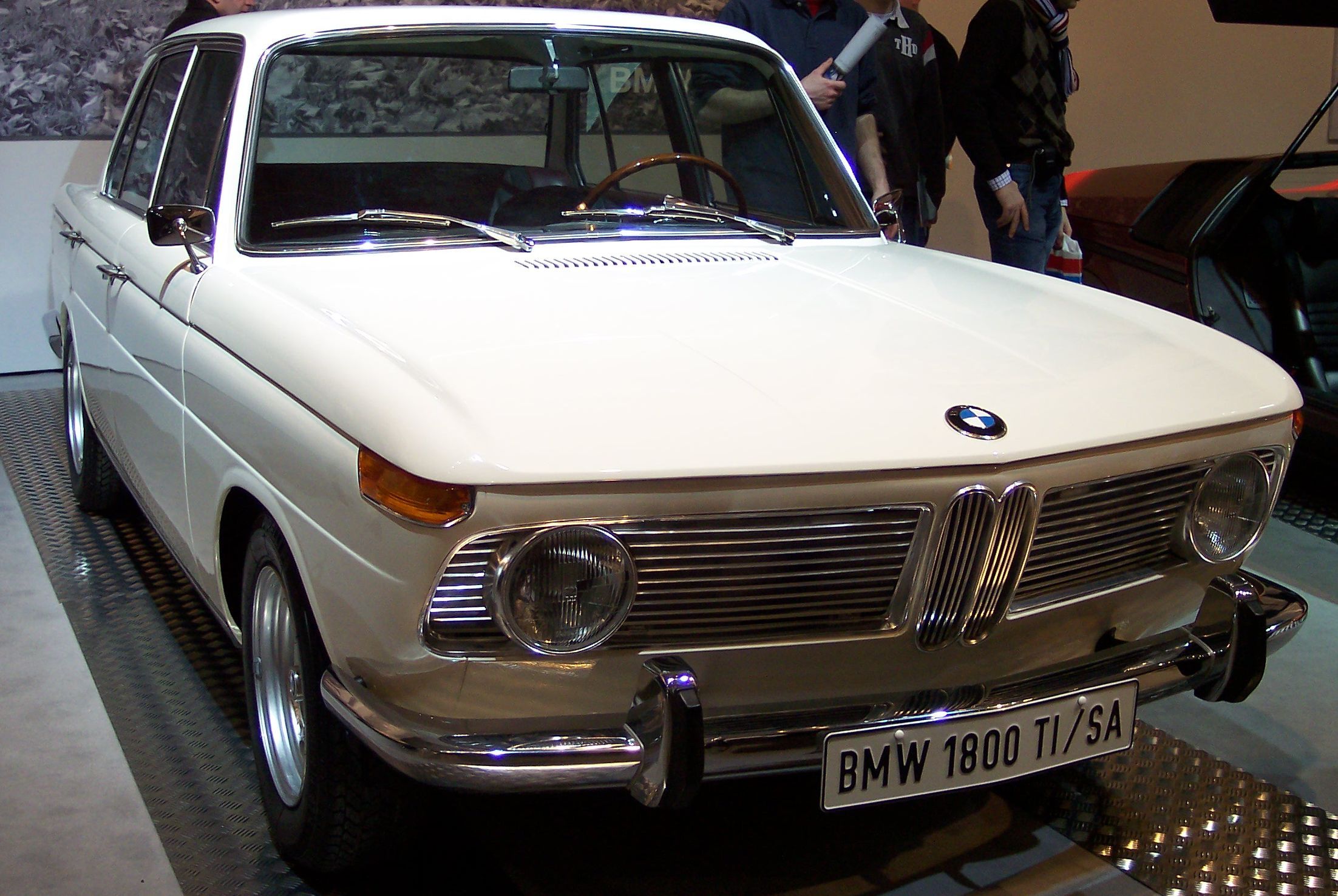
8. **BMW 1800**BMW’s 1800, which debuted in 1963 at a price point of 9,485 Deutschmarks, was nothing short of revolutionary, effectively creating an entirely new category within the automotive landscape: the modern sports sedan. This seminal vehicle transcended the traditional boundaries between performance and practicality, laying the groundwork for a design language that continues to profoundly influence contemporary BMWs. Its exterior styling was characterized by a distinctive forward-leaning stance, conveying a sense of dynamic readiness, and the now-iconic Hofmeister kink, a subtle yet powerful design cue at the C-pillar that became a hallmark of the brand. Slim pillars and minimal overhangs contributed not only to its visual balance but also to its exceptional dynamic ability, underscoring BMW’s commitment to driving pleasure. Today, values typically ranging from $25,000 to $50,000 position this pioneering sports sedan as an attractive and highly accessible entry point into the esteemed world of classic BMW ownership.
The interior of the BMW 1800 was a masterclass in ergonomic design, where every control was intuitively placed precisely where a driver’s hands would instinctively expect to find them. This thoughtful cabin architecture ensured that the driving experience was both engaging and free from unnecessary distractions, prioritizing the human-machine interface. Premium vinyl surfaces, meticulously paired with elegant wood accents, created an environment that felt inherently special and refined without veering into ostentatious luxury. The horizontal dashboard layout further contributed to the car’s perfect ergonomics, particularly beneficial for spirited driving, allowing for quick and clear readings of the instrumentation. While many luxury sedans of the era focused predominantly on brute straight-line speed, the 1800’s holistic and balanced approach to performance—combining precise handling, responsive braking, and adequate power—effectively created the definitive template for what we now recognize as the modern sports sedan, a segment that BMW continues to dominate today.
The BMW 1800’s significance cannot be overstated, as it fundamentally redefined expectations for a family-friendly car that could also deliver genuine sporting credentials. Its robust chassis and well-tuned suspension offered a level of driving sophistication rarely found outside dedicated sports cars, yet it maintained the practicality and comfort necessary for daily use. Powered by a capable inline-four engine, the 1800 delivered sprightly performance, proving that exhilaration didn’t require an oversized powerplant. This strategic fusion of engaging dynamics, intelligent design, and everyday usability cemented its place as an unappreciated but profoundly influential model. It not only became a cornerstone for BMW’s future success but also inspired an entire industry to rethink the possibilities of a performance-oriented sedan, proving that true automotive genius often lies in harmonizing disparate qualities into a cohesive, compelling whole.
Car Model Information: 2022 BMW X5 xDrive40i
Caption: BMW 2000
Name: BMW New Class
Manufacturer: BMW
Production: 1962–1972
Designer: Wilhelm Hofmeister (automobile designer)
Assembly: Munich,Jakarta
BodyStyle: Grand tourer
Related: BMW 02 Series
Successor: BMW 5 Series,BMW E9
Layout: Front-engine, rear-wheel-drive layout
Engine: BMW M10
Categories: 1970s cars, All articles with dead external links, All articles with unsourced statements, Articles containing German-language text, Articles with dead external links from July 2025
Summary: The BMW New Class (German: Neue Klasse) was a line of sedans and coupes produced by West German automaker BMW between 1962 and 1972. These models ensured BMW’s solvency after the company’s financial crisis of the 1950s and again established the identity of BMW automobiles as luxury sports sedans.
The first New Class vehicle was the 1500, a 4-door compact executive car with the new M10 (at the time called M115) OHC 4-cylinder engine. In 1965, the 2000 C and 2000 CS luxury coupés were added to the range.
Replacement of the New Class models began with the 6-cylinder E9 2800 CS in 1969 replacing the 2000 C and 2000 CS coupés. In 1972 the 4-door sedans were replaced by the larger E12 5 Series.
The New Class coupes introduced the Hofmeister kink, which has been used on most BMW cars since. Another legacy of the New Class is the iconic 02 Series, which are a shortened version of the New Class sedans.
Get more information about: BMW New Class
Buying a high-performing used car >>>
Brand: BMW Model: 1800
Price: $43,499 Mileage: 34,998 mi.
Read more about: 12 Ridiculously Rare Wagons That Outshine Muscle Cars: An Enthusiast’s Deep Dive
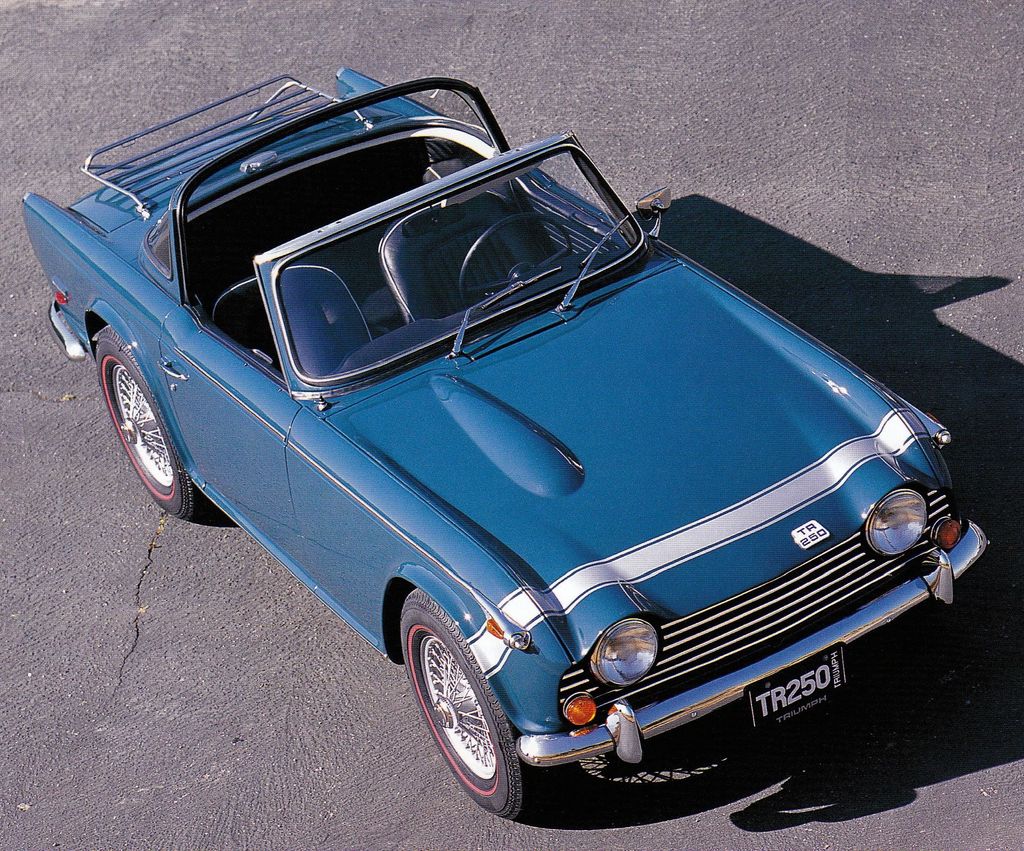
9. **Triumph TR250**In 1967, Triumph’s TR250 burst onto the scene with an initial price of $3,395, masterfully showcasing a compelling fusion of traditional British finesse with an underlying surge of American muscle. This distinctive sports car represented a strategic evolution of the well-regarded TR series, designed to inject a new level of performance and visual aggression. Its exterior was immediately set apart by bold side stripes and a perceptibly raised hood profile, elements that skillfully transformed the conventional TR shape into something decidedly more purposeful and potent. The car’s aesthetic balance was further enhanced by purposeful steel wheels, elegantly accented with chrome trim rings, striking a perfect equilibrium between understated flash and robust functionality. With a limited production run of just 2,947 units, this Anglo-American hybrid is particularly coveted by modern collectors, who value these rare models at figures typically ranging from $35,000 to $70,000, a clear testament to its unique heritage and scarcity.
The cockpit of the TR250 envelops the driver in the timeless appeal of British tradition, presenting an environment that is both classic and inherently driver-focused. Rich walnut veneer provides a sophisticated backdrop, elegantly framing crisp Smiths gauges that deliver essential operational information with clarity and precision. The leather wheel rim, carefully chosen for its tactile feel, offers direct and precise feedback, fostering a deep connection between the driver and the road. The array of toggle switches, a quintessential British touch, operate with a satisfying mechanical precision, reinforcing the car’s engaging and tangible nature. In an era where some manufacturers were chasing increasingly modern and sometimes sterile designs, the TR250 staunchly upheld traditional sports car values, delivering a thrilling driving experience that included a brisk 0-60 mph dash in 9.1 seconds. This robust performance, combined with its classic charm, proved emphatically that heritage and engaging mechanics still had a tremendous amount to offer to discerning enthusiasts.
The TR250’s unique position as a bridge between British engineering and American powertrain philosophy makes it a fascinating study for automotive historians and collectors alike. While its engine, a 2.5-liter inline-six that provided a significant boost in torque and horsepower compared to its predecessors, delivered robust performance, it did so with a character that was distinctively its own. It retained the agile handling and responsive chassis dynamics that were hallmarks of Triumph sports cars, but with a more muscular and assertive power delivery. This careful blending of attributes ensured that the TR250 was more than just a transitional model; it was a potent and charismatic machine that offered a unique driving proposition. Its limited availability and the successful integration of these diverse engineering philosophies guarantee its continued recognition as a significant and highly desirable classic, a true embodiment of the dynamic and experimental spirit of the 1960s automotive industry.
Car Model Information: 1968 Triumph TR250
Name: Triumph TR5,Triumph TR250
Manufacturer: Triumph Motor Company
Production: 1967–1968
Assembly: Coventry
Designer: Giovanni Michelotti
Class: Sports car
BodyStyle: Roadster (automobile)
Layout: Front-engine, rear-wheel-drive layout
Engine: Triumph I6
Transmission: Manual transmission
Wheelbase: 2240 mm
Abbr: on
Length: 3902 mm
Width: 1470 mm
Height: 1170 mm
Weight: 1030 kg
Predecessor: Triumph TR4A
Successor: Triumph TR6
Sp: uk
Categories: 1960s cars, Articles with short description, CS1 errors: missing periodical, Cars discontinued in 1968, Cars introduced in 1967
Summary: The Triumph TR5 is a sports car built by the Triumph Motor Company in Coventry, England, between August 1967 and September 1968.
Visually similar to the Michelotti-designed TR4 open two-seater it was derived from, the TR5 replaced Triumph’s 105 bhp (78 kW) SAE Standard inline-four engine with the much more powerful Lucas mechanical fuel-injected 150 bhp (110 kW) Triumph 2.5-litre straight-6. Price pressures and tighter emissions standards in the U.S. resulted in a much less powerful carburetted version, the TR250, being sold on the North American market.
At the time, fuel injection was uncommon in road cars. Triumph claimed in their sales brochure that it was the “First British production sports car with petrol injection”.
Get more information about: Triumph TR5
Buying a high-performing used car >>>
Brand: Triumph Model: TR250
Price: $14,750 Mileage: 0 mi.
Read more about: The Disappointing Cars We Can’t Forget
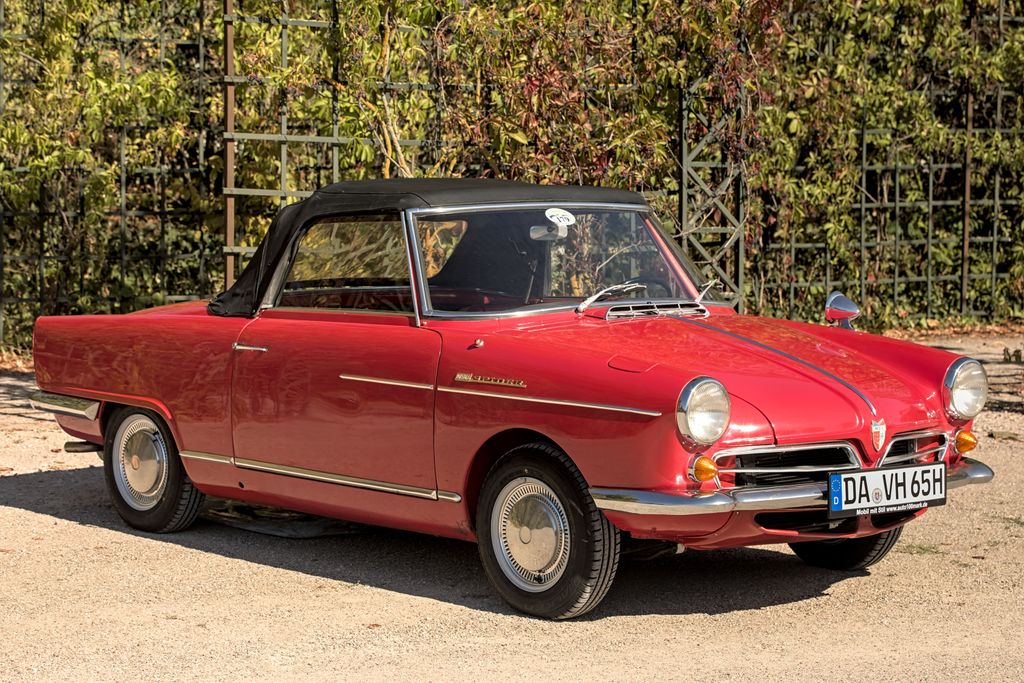
10. **NSU Spider**In 1964, NSU embarked on a bold and pioneering venture with the launch of the Spider, priced at 8,500 Deutschmarks, staking its future on a truly revolutionary engine design: the Wankel rotary. This audacious gamble underscored NSU’s unwavering commitment to innovation and pushing the boundaries of automotive engineering. The exterior of the Spider was a marvel of clever engineering and aerodynamic optimization, featuring cooling vents seamlessly integrated into the rear deck, a subtle yet effective design choice. Every curve of the car’s body was meticulously shaped through wind tunnel testing, ensuring maximum efficiency and a distinctive profile. A standout feature was its innovative hardtop, which ingeniously transformed the car from a sleek coupe to an exhilarating roadster in a matter of minutes, effectively solving the age-old convertible compromise of structural rigidity versus open-air freedom. Today, the NSU Spider’s market values, typically ranging from $40,000 to $80,000, reflect both its profound historical significance and its pioneering role in showcasing groundbreaking Wankel engine technology.
Stepping into the Spider’s cockpit immediately immerses the driver in a command center meticulously built around its revolutionary powerplant. A prominent central tachometer dominates the instrument cluster, serving as a constant reminder of the unique operational characteristics and high-revving nature of the Wankel engine. This design choice powerfully communicates the car’s forward-thinking engineering and the novel experience of driving a rotary-powered machine. Beyond its performance focus, clever engineering extended to practicality; NSU carved out an impressive 6.5 cubic feet of versatile front trunk space, a thoughtful addition often overlooked in cars of such innovative design. Among the mere 2,375 units produced, each surviving NSU Spider represents a bold and visionary step into the automotive future, combining NSU’s sophisticated weight distribution for superior handling with an unprecedented level of engine smoothness that continues to impress and captivate enthusiasts even today.
The NSU Spider’s legacy is intrinsically tied to its groundbreaking Wankel engine, a technology that, while facing challenges, offered a glimpse into a potential future for automotive powerplants with its compact size and inherent smoothness. This car wasn’t just a vehicle; it was a rolling laboratory, a testament to NSU’s courage to defy conventional piston-engine dogma. The attention to detail in its aerodynamic design and the practical ingenuity of its convertible top further highlight NSU’s comprehensive engineering approach. For true collectors, owning an NSU Spider is not merely about possessing a rare classic; it’s about owning a tangible piece of automotive history, a symbol of innovation and a pioneering spirit that dared to experiment with radical ideas. Its distinct character and the unique driving experience it offers ensure its place as one of the most intriguing and truly recognizable sports cars from the dynamic and experimental decade of the 1960s.
The 1960s, a decade of profound revolution, left an indelible mark on automotive history. It was an era where the unbridled passion of engineers and designers, often unfettered by later constraints, converged to create machines that were icons of style, performance, and pure driving pleasure. These aren’t the mainstream legends, but rather profound results of bold risks and visionary engineering, pioneering technologies and design philosophies decades ahead of their time. For the true connoisseur, recognizing these distinct vehicles is a testament to an in-depth understanding of a pivotal era, showcasing an appreciation that extends far beyond the common narrative.
Read more about: Step Back in Time! 14 Jaw-Dropping Pictures That Prove the 1950s Were Totally Wild and Way Cooler Than You Think
As we’ve explored these ten remarkable sports cars, from revolutionary mid-engine configurations to bold engineering experiments, we’ve witnessed a golden age of automotive design. Each challenged conventions, setting new benchmarks and building a legacy that continues to inspire. These vehicles are not just relics; they are tangible pieces of history, embodying the audacious spirit of innovation that defined the 1960s. For collectors who delve beyond the obvious, these lesser-known gems offer a richer, more profound connection to the roots of modern automotive excellence, proving that some of the greatest stories in car history are found in the subtle nuances of groundbreaking design and engineering.


